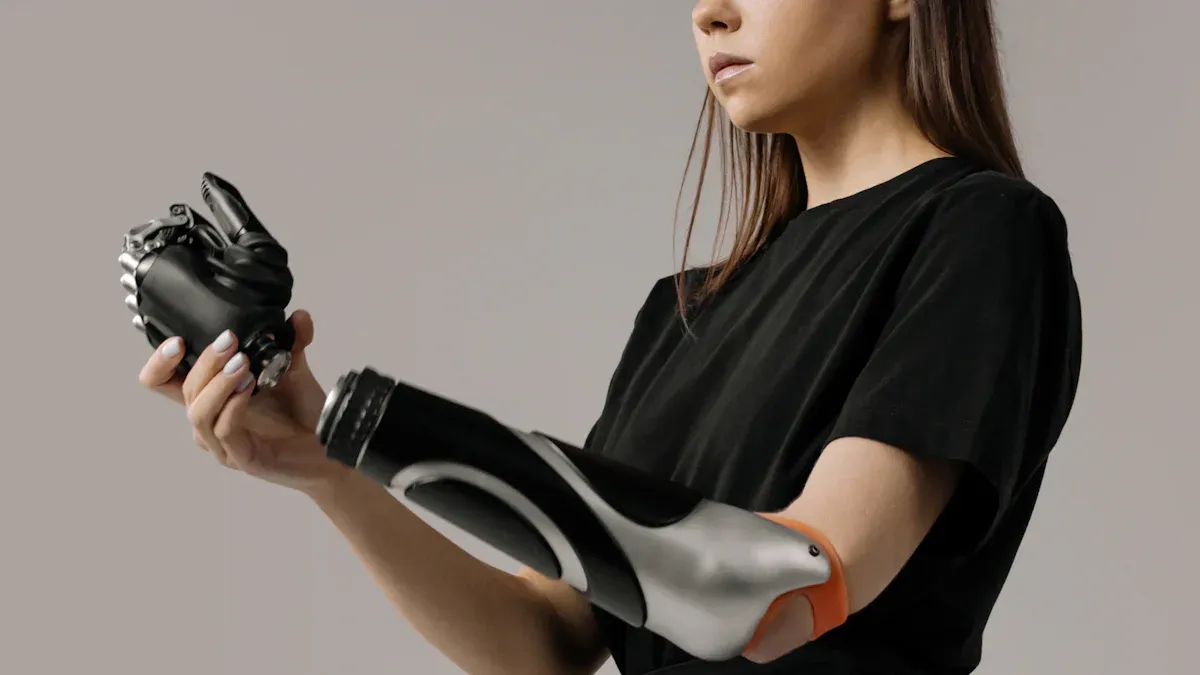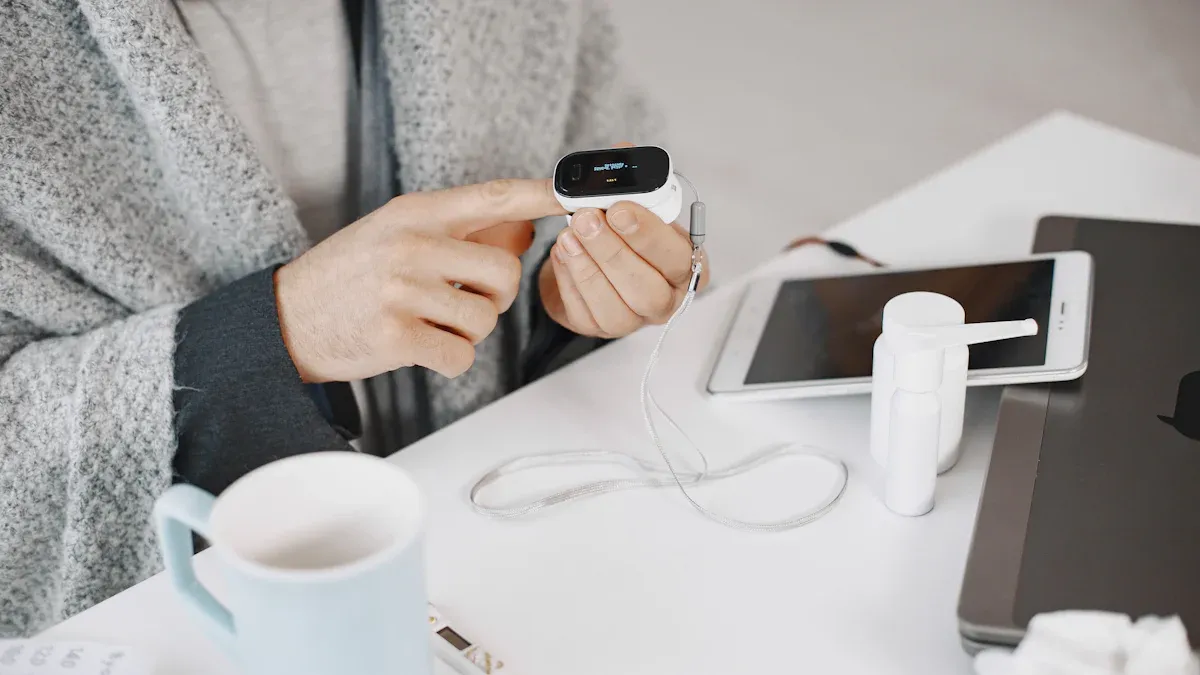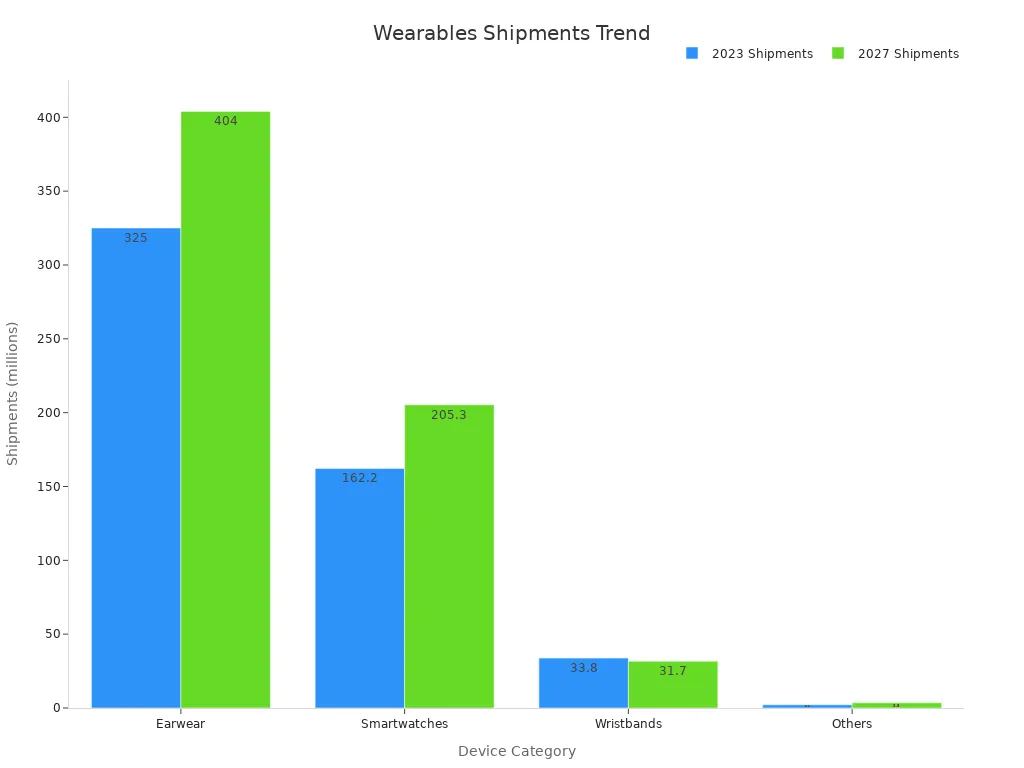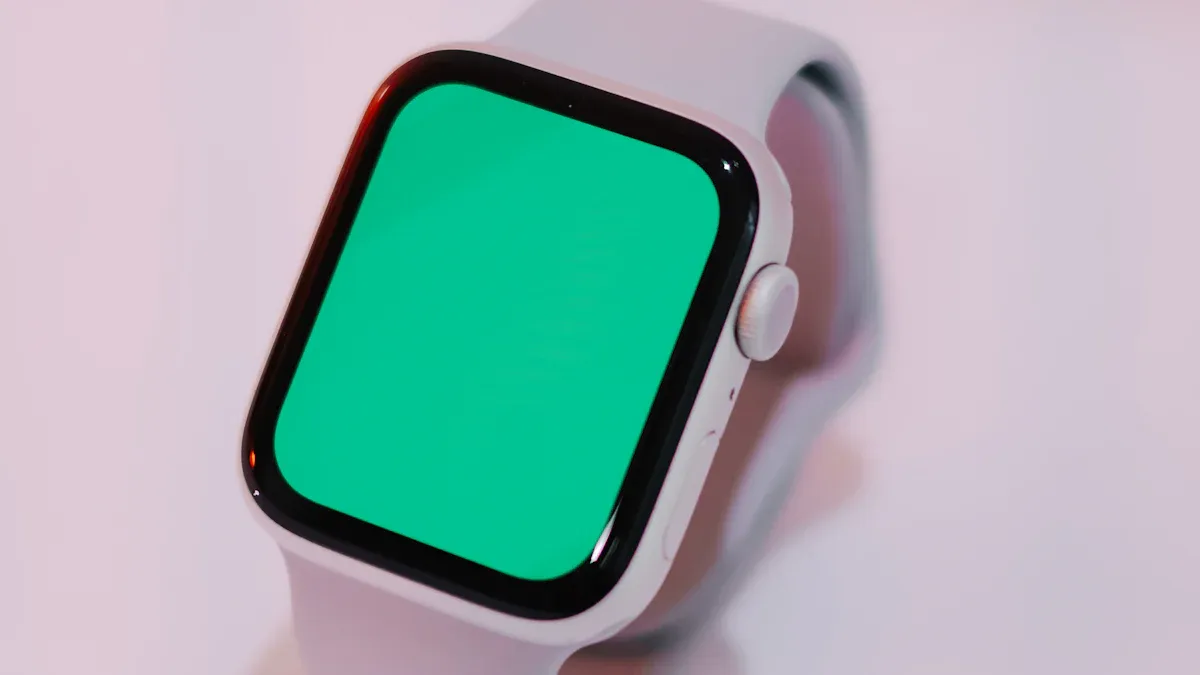
Medical wearables have transformed how you monitor and improve your health. These devices stay in constant contact with your skin, so comfort is crucial. Silicone plays a key role in solving common problems like irritation and poor fit. Its biocompatibility ensures it is safe for your skin, while its flexibility allows wearable devices to adapt to your movements. By enhancing comfort, silicone overmolding helps you use medical devices longer, leading to better healthcare experiences and improved patient outcomes.

Medical wearables are devices designed to monitor your health and provide real-time insights into your body’s functions. These devices include smartwatches, fitness trackers, and wearable medical devices like continuous glucose monitoring systems and smart insulin delivery devices. They track vital signs such as heart rate, oxygen levels, and glucose levels, helping you stay informed about your health. Wearable technology has become an essential part of modern healthcare, enabling remote patient monitoring and empowering you to take control of your well-being.
Wearable smart health monitoring devices also connect with mobile health apps. These apps allow you to track medication schedules, set reminders, and communicate with healthcare providers. By integrating wearable technology with digital tools, you can manage your health more effectively and proactively.
Skin-contact devices play a critical role in patient care. They provide continuous monitoring of vital signs, ensuring that healthcare professionals receive accurate and timely data. For example, continuous glucose monitoring devices help patients with diabetes maintain stable glucose levels by providing real-time updates. This reduces the risk of complications and improves overall health outcomes.
These devices also enhance remote patient monitoring, allowing doctors to track your health without requiring frequent visits to a clinic. This is especially beneficial for patients with chronic conditions or those living in remote areas. By offering convenience and accuracy, wearable healthcare devices improve patient care and support better decision-making in treatment plans.
Designing wearable healthcare devices comes with several challenges. One major issue is ensuring accuracy in monitoring. Motion artifacts and signal interference can affect the performance of advanced sensors, leading to unreliable data. Calibration difficulties further complicate the design process, making it harder to achieve consistent results.
Another challenge is creating devices that are comfortable for long-term use. Poor fit, skin irritation, and pressure points can discourage you from wearing these devices regularly. Additionally, durability is a concern, as wearable devices must withstand daily wear and tear while maintaining their functionality. Overcoming these challenges is essential to ensure that wearable medical devices meet your needs effectively.

Skin irritation is a common issue with medical devices that stay in contact with your skin for extended periods. Adhesives used in these devices often cause redness, itching, or even rashes. Some adhesives release allergens, which can lead to allergic reactions. For example, isobornyl acrylate, a common allergen in diabetic devices, has been linked to skin sensitivity. Continuous use of adhesive patches can worsen these reactions, making your skin more prone to irritation over time.
The table below highlights some key findings about skin irritation and allergies caused by skin-contact devices:
| Evidence Description | Details |
|---|---|
| Increase in Allergies | Reports of contact allergies increased shortly after the introduction of new diabetic devices. |
| Role of Allergens | Adhesives and components of medical devices can release contact allergens, complicating diagnosis. |
| Common Allergens | Isobornyl acrylate is frequently observed as a contact allergen in diabetic devices. |
| Adhesive Properties | Continuous use of adhesive patches can lead to skin irritation and sensitization to allergens. |
Choosing hypoallergenic materials for these devices can help reduce the risk of irritation and allergic reactions, ensuring your skin stays healthy.
A poor fit can make wearing medical devices uncomfortable. If a device presses too hard on your skin, it can create pressure points that cause pain or discomfort. Loose-fitting devices, on the other hand, may shift during use, leading to inconsistent monitoring or data inaccuracies. These issues can discourage you from wearing the device regularly, which may affect your health monitoring.
To address these problems, manufacturers must design devices that adapt to your body’s shape and movements. Flexible materials and ergonomic designs can help improve the fit, ensuring the device stays comfortable throughout the day.
Medical devices need to withstand daily wear and tear while maintaining their functionality. Prolonged use can expose them to sweat, moisture, and friction, which may degrade their materials. Adhesives can lose their stickiness over time, causing the device to detach from your skin. This not only affects the device’s performance but also increases the risk of skin irritation.
Durable materials and advanced manufacturing techniques are essential for creating devices that last. When a device is built to endure long-term use, it provides reliable performance and minimizes the need for frequent replacements.

Silicone overmolding is a manufacturing process that combines two materials to create a single, cohesive product. In this process, liquid silicone rubber is injected over a base material, such as plastic or metal, to form a durable and flexible outer layer. This technique enhances the functionality and comfort of wearable devices by providing a soft, skin-friendly surface.
Recent advancements in silicone materials, like liquid silicone rubber (LSR), have revolutionized this process. For example, the introduction of SILBIONE™ LSR Select™ allows manufacturers to overmold sensitive electronics at lower temperatures. This innovation improves design flexibility and processing efficiency, making it easier to create modern wearable devices. LSR’s rapid curing time and resistance to heat and chemicals further enhance its suitability for medical wearables. These properties ensure that the devices remain safe, effective, and comfortable for users.
Silicone stands out as the perfect material for skin-contact applications due to its unique properties. Its biocompatibility ensures that it is safe for prolonged contact with your skin, reducing the risk of irritation or allergic reactions. Additionally, silicone’s flexibility allows it to adapt to the contours of your body, providing a comfortable fit even during extended use.
These qualities make silicone a reliable choice for healthcare devices that require consistent performance and user comfort.
Silicone overmolding has a wide range of applications in wearable devices. It is commonly used to create waterproof seals, soft-touch surfaces, and flexible components that enhance the durability and usability of these devices. For example, the Spot-r device by Triax Technologies uses silicone overmolding to protect its internal electronics while maintaining easy access to components. This design ensures the device remains functional in demanding environments, such as construction sites.
Other applications include:
- Liquid silicone rubber overmolding for seals and gaskets in high-temperature environments.
- Precision manufacturing of parts with tight tolerances, ensuring reliable performance.
- Silicone-based patches for medical monitoring, which provide a secure and comfortable fit for extended wear.
These examples highlight how silicone overmolding improves the functionality and comfort of wearable devices, making them more effective for healthcare applications.
Silicone overmolding significantly improves the comfort of wearable healthcare devices by addressing common skin-related issues. Its hypoallergenic properties make it safe for prolonged contact with your skin, reducing the risk of allergic reactions. Silicone also allows air to circulate, preventing moisture buildup that can lead to irritation or dermatitis. This makes it an ideal material for wearable smart health monitoring devices that you may need to wear for extended periods.
The table below highlights how silicone enhances skin comfort and minimizes irritation:
| Feature | Benefit |
|---|---|
| Hypoallergenic properties | Reduces allergic reactions and irritation |
| Breathability | Enhances comfort by allowing air circulation |
| Moisture wicking | Keeps skin dry, reducing dermatitis risk |
By incorporating silicone into medical wearables, manufacturers ensure that these devices remain gentle on your skin, even during long-term use. This improvement encourages you to wear these devices consistently, leading to better health monitoring and outcomes.
Silicone overmolding enhances the durability of wearable healthcare devices, ensuring they withstand daily wear and tear. Silicone’s resistance to heat, moisture, and chemicals protects the internal components of medical devices, extending their lifespan. For example, silicone seals and coatings prevent damage caused by sweat or environmental factors, keeping the devices functional over time.
Studies have shown the impact of silicone on durability:
- A study found that well-maintained silicone kitchenware can last up to 30% longer than neglected items, highlighting the importance of proper care.
- Regular inspections of silicone rubber seals led to a 65% reduction in unexpected failures, demonstrating how proactive maintenance can enhance device longevity.
These findings emphasize how silicone overmolding contributes to the reliability of wearable technology. When your device lasts longer, you save money on replacements and enjoy uninterrupted health monitoring.
Silicone’s flexibility and elasticity make it an excellent choice for wearable devices that need to adapt to your body’s shape and movements. This ensures a snug yet comfortable fit, reducing the risk of pressure points or discomfort. Whether you’re wearing a continuous glucose monitor or a fitness tracker, silicone overmolding helps the device conform to your body without losing its structural integrity.
The table below illustrates how silicone improves fit and adaptability:
| Benefit | Description |
|---|---|
| Biocompatibility | Silicone is non-toxic and safe for long-term contact with human tissue, making it ideal for medical applications. |
| Flexibility and Elasticity | Silicone's exceptional stretchability allows it to conform to body contours without losing structural integrity. |
This adaptability ensures that wearable healthcare devices remain secure and comfortable, even during physical activities. By improving fit, silicone overmolding enhances your experience with wearable smart health monitoring devices, encouraging consistent use and better health outcomes.
When you wear a medical device for extended periods, its safety and compatibility with your skin become critical. Silicone stands out as a material that ensures both biocompatibility and comfort, making it a trusted choice for wearable healthcare devices.
Medical-grade silicone is specifically designed for prolonged skin contact. It does not cause allergies, irritation, or toxic reactions. Its biocompatibility guarantees stability, ensuring it does not release harmful substances. This makes silicone a reliable material for devices like glucose monitors, fitness trackers, and other wearables that stay on your skin for hours or even days.
Silicone offers several biocompatibility attributes that make it ideal for medical wearables:
- It is breathable, which prevents your skin from becoming macerated or overly moist.
- It is gentle and does not leave residue when removed, reducing the risk of irritation.
- It is nontoxic and hypoallergenic, ensuring safety for all skin types, including sensitive skin.
These features allow silicone to provide a comfortable and safe experience, even during prolonged use.
Clinical data supports the safety of silicone for skin-contact applications. The table below highlights key findings:
| Evidence | Description |
|---|---|
| Low Biocompatibility Risk | Polymers and fabrics, including silicone, have a long history of safe use in medical devices that contact intact skin. |
| Recommendations for Testing | The FDA suggests that manufacturers monitor for cytotoxicity, irritation, or sensitization as indicators of skin reactions. |
| Specific Material Identification | Silicone is recognized as a synthetic polymer suitable for medical applications involving skin contact. |
These findings confirm that silicone meets the highest safety standards for medical devices. Its biocompatibility attributes ensure that it remains safe and effective for prolonged use.
By choosing devices made with silicone, you can trust that your skin will stay healthy and irritation-free. This level of safety encourages consistent use, helping you achieve better health outcomes.
Silicone overmolding has transformed wearable healthcare devices by making them more comfortable and user-friendly. When a device feels soft and adapts to your skin, you are more likely to wear it consistently. This increased compliance ensures that you benefit fully from the device's health-monitoring capabilities. Silicone’s hypoallergenic properties also reduce the risk of irritation, encouraging long-term use without discomfort.
Customization options further enhance your experience. Silicone overmolding allows manufacturers to design devices tailored to individual needs. For example, smaller, lightweight designs improve wearability, making it easier for you to integrate these devices into your daily routine. The table below highlights key metrics that demonstrate how silicone overmolding enhances patient experience:
| Metric | Impact on Patient Experience |
|---|---|
| Biocompatibility | Ensures safety and reduces adverse reactions in patients. |
| Customization Options | Allows for tailored designs that meet individual patient needs. |
| Incorporation of APIs | Enhances treatment outcomes by delivering medication effectively. |
| Device Miniaturization | Reduces size and weight, improving wearability and comfort. |
| Enhanced Functionality | Increases device integrity and reliability, leading to better user experience. |
Wearable technology has evolved into a powerful tool for health monitoring. Modern wearables continuously track vital signs like heart rate and glucose levels, providing real-time data. This capability allows healthcare providers to detect potential issues early and adjust treatment plans to suit your needs. For instance, a wearable can identify irregular heart rhythms, enabling timely intervention and preventing complications.
These advancements also support personalized medicine. By analyzing your health trends over time, wearable healthcare devices offer insights that help create tailored treatment plans. This proactive approach improves chronic disease management and enhances overall health outcomes. Additionally, the ability to monitor your health actively fosters greater engagement, encouraging you to stay committed to your treatment plan.
Patients and healthcare providers alike have praised the impact of silicone overmolding on wearable devices. You may find that these devices feel more natural and less intrusive, making them easier to incorporate into your lifestyle. Providers appreciate the improved accuracy and reliability of data collected by these wearables, which supports better decision-making in patient care.
The enhanced comfort and functionality of silicone-based wearables have led to higher satisfaction rates. Patients report fewer issues with irritation or device failure, while providers benefit from the consistent performance of these devices. This positive feedback highlights the role of silicone overmolding in improving both user experience and healthcare outcomes.
Silicone overmolding has revolutionized medical wearables by solving challenges in comfort and usability. Its biocompatibility ensures safety for your skin, while its flexibility allows devices to adapt to your movements. Durable silicone materials extend the lifespan of wearable healthcare devices, making them reliable for long-term use. By improving patient comfort, silicone overmolding encourages consistent use, leading to better health monitoring and outcomes. This innovation supports the growing adoption of wearable technology in modern healthcare.
Silicone overmolding is not just a material choice; it’s a step forward in patient-centered design.
Silicone overmolding is a process where liquid silicone rubber is molded over another material to create a soft, durable surface. This technique improves the comfort, fit, and safety of medical wearables, making them more user-friendly and effective for long-term use.
Yes, silicone is hypoallergenic and biocompatible. It minimizes the risk of irritation or allergic reactions, even for sensitive skin. Its breathable and non-toxic properties make it ideal for prolonged contact, ensuring your skin stays healthy and comfortable.
Silicone protects wearable devices from moisture, heat, and daily wear. Its resistance to environmental factors ensures the device remains functional over time. This durability reduces the need for frequent replacements, saving you money and ensuring reliable health monitoring.
Absolutely! Silicone’s flexibility allows it to conform to your body’s shape, providing a snug yet comfortable fit. This adaptability reduces pressure points and ensures the device stays secure during movement, enhancing your overall experience with medical wearables.
Silicone offers unique benefits like biocompatibility, flexibility, and durability. Unlike other materials, it is safe for prolonged skin contact, adapts to your movements, and withstands harsh conditions. These qualities make it the top choice for wearable healthcare devices.